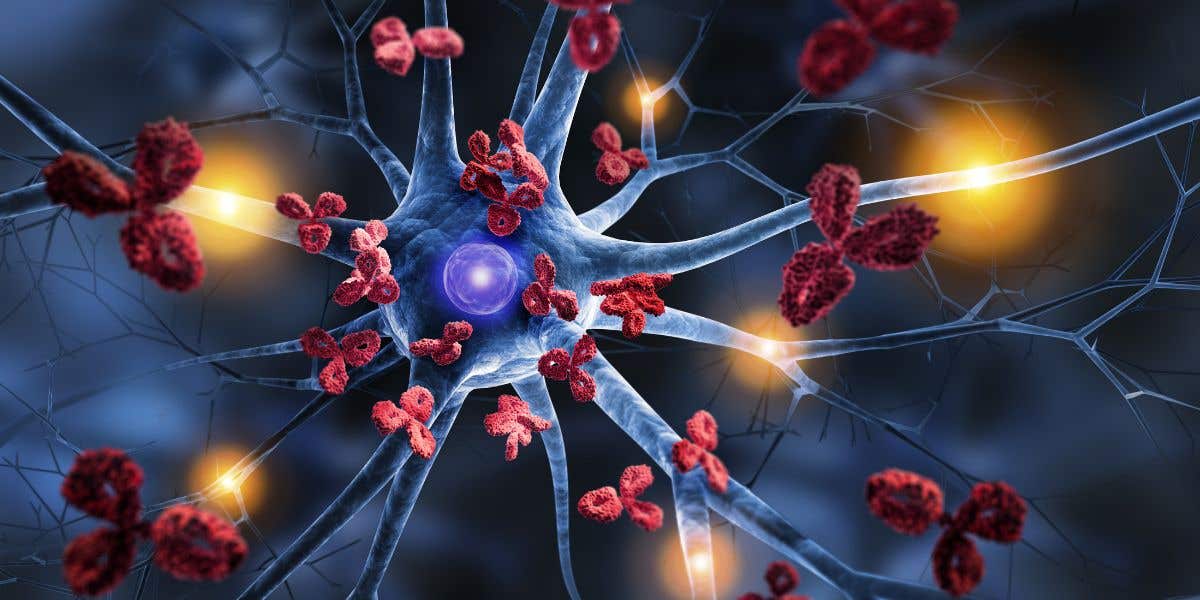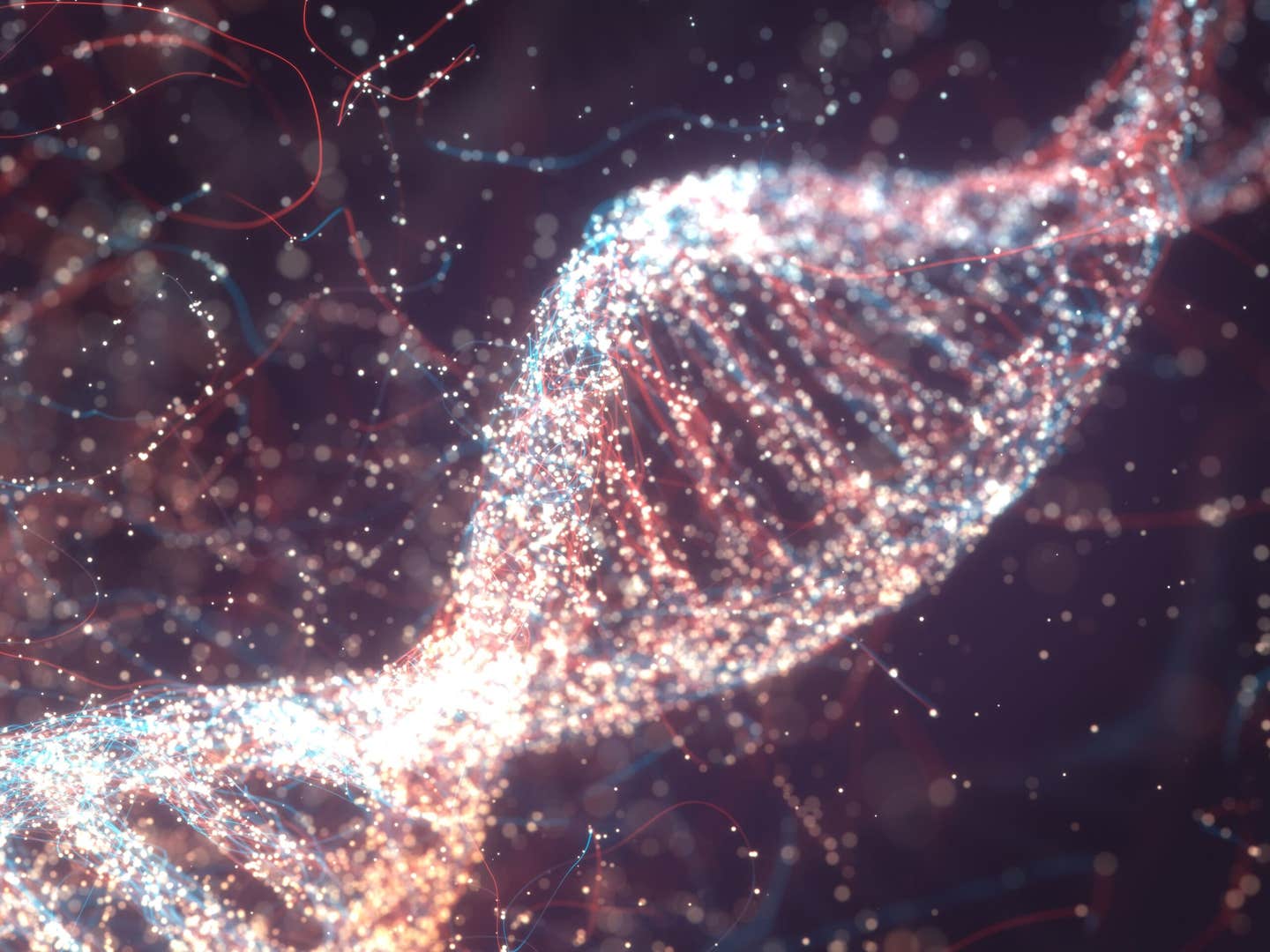Groundbreaking treatment repairs damaged nerve cells after injury and in chronic disease
Each year in the United States, more than 3 million people suffer from peripheral neuropathy, a condition characterized by damage to nerves

[Nov. 29, 2023: JJ Shavit, The Brighter Side of News]
Each year in the United States, more than 3 million people suffer from peripheral neuropathy, a condition characterized by damage to nerves. (CREDIT: Salk Institute)
Each year in the United States, more than 3 million people suffer from peripheral neuropathy, a condition characterized by damage to nerves outside the brain and spinal cord, leading to excruciating pain and loss of sensation in affected areas. Peripheral neuropathy can result from various causes, including diabetes, injuries, genetic disorders, infections, and more.
However, a ray of hope has emerged in the field of neuroscience, as scientists at the Salk Institute have uncovered a groundbreaking mechanism for repairing damaged nerves in peripheral neuropathy. Their discovery revolves around the protein Mitf, which plays a pivotal role in activating the repair function of specialized nervous system Schwann cells.
Published in Cell Reports, this remarkable breakthrough has the potential to pave the way for innovative therapeutics aimed at enhancing the repair capabilities of the nervous system and potentially curing peripheral neuropathy.
Professor Samuel Pfaff, the senior author of the study, explained the team's motivation, saying, "We wanted to know what mechanisms control damage response in peripheral nerves under varying conditions—like acute trauma, genetic disorders, or degenerative diseases. We found that Schwann cells, which are special cells in nerves that protect and support neurons' axons, enter their repair state because of a pathway mediated by the protein Mitf."
Related Stories:
The peripheral nervous system encompasses all the nerves branching out from the brain and spinal cord, responsible for providing us with sensory input throughout our bodies. While there are numerous cell types in peripheral nerves, Pfaff and his research team are primarily focused on comprehending the intricate workings of neurons, responsible for transmitting information throughout the nervous system, and Schwann cells, tasked with safeguarding healthy neurons and restoring damaged ones.
What makes the peripheral nervous system even more fascinating is its innate ability to repair damage, a feat that remains beyond the capabilities of the central nervous system, comprised of the brain and spinal cord. Despite its significance, the mechanisms orchestrating this remarkable feat have long eluded scientists.
To unravel the process by which Schwann cells initiate repairs in response to peripheral nerve damage, the researchers turned to mouse models of Charcot Marie Tooth disease (CMT), a hereditary neuropathy.
Cross-section of mouse sciatic nerves. (CREDIT: Salk Institute)
Lydia Daboussi, the first author of the study and a former postdoctoral researcher in Pfaff's lab who now serves as an assistant professor at UC Los Angeles, shared her initial perspective, stating, "Going into this project, I thought that when you have a genetic nerve degeneration disorder, cells are dying and recovery isn't possible. But our findings show that there are gene programs turned on by Mitf that repair some of the damage done in those chronic disease scenarios, and when you turn those programs off, disease symptoms get worse."
In the mice afflicted with CMT, the research team observed that Schwann cells engaged in repairs exhibited elevated levels of Mitf within their nuclei—the repository of genetic instructions dictating how Schwann cells function and conduct repairs.
From left: Samuel Pfaff and Lydia Daboussi. (CREDIT: Salk Institute)
Upon investigating the intricate relationship between Mitf and Schwann cells, the researchers made a pivotal discovery. They found that Mitf was initially located in the cytoplasm of Schwann cells but swiftly relocated to the nucleus when these cells sensed neuronal damage. This relocation of Mitf to the nucleus served as a cue, directing the Schwann cells to commence the repair process.
To confirm the crucial role of Mitf in the creation of repair-oriented Schwann cells, the researchers conducted experiments in which Mitf was entirely removed. In both traumatic injuries and cases of CMT, the absence of Mitf resulted in the arrest of nerve repair, providing compelling evidence that Mitf is an indispensable factor in peripheral nerve repair and regeneration.
Graphical study abstract: Mitf-induced Schwann cell plasticity is triggered by peripheral neuropathy. (CREDIT: Cell Reports)
Daboussi aptly likened Mitf to a fire extinguisher, always present in Schwann cells, inconspicuous until damage occurs. When that damage strikes, Mitf is poised and ready to activate the cell's repair mechanisms.
Perhaps the most surprising aspect of the study, as highlighted by Pfaff, is that Mitf plays a pivotal role in orchestrating repairs even in chronic diseases like CMT.
Pfaff emphasized the potential of harnessing Schwann cell repair programs in treating chronic diseases, saying, "It's possible that with targeted therapeutics, we can prompt more Schwann cells to repair peripheral nerve damage and push those repairs to completion in chronic cases. Furthermore, now that we have a better grasp on the repair mechanisms, we can see if it's possible to initiate repairs in the brain stem and spinal cord, too."
Network analysis links Mit/Tfe to SC response in CMT4J. (CREDIT: Cell Reports)
Looking ahead, the researchers plan to delve more deeply into the study of diabetic neuropathy, the most prevalent form of peripheral neuropathy. They also aspire to explore therapeutic interventions aimed at enhancing the repair pathway, ensuring the creation of Schwann cells programmed to repair damage, regardless of whether the damage arises from trauma, genetic factors, or the passage of time.
Peripheral neuropathy represents a debilitating condition that has plagued millions of individuals in the United States alone. The discovery of Mitf's pivotal role in initiating nerve repair offers new hope for patients suffering from this condition. With continued research and the development of targeted therapies, there is the potential to alleviate the suffering of those afflicted with peripheral neuropathy and bring about a new era of healing and restoration in the field of neurology.
Note: Materials provided by The Brighter Side of News. Content may be edited for style and length.
Like these kind of feel good stories? Get the Brighter Side of News' newsletter.
Joseph Shavit
Head Science News Writer | Communicating Innovation & Discovery
Based in Los Angeles, Joseph Shavit is an accomplished science journalist, head science news writer and co-founder at The Brighter Side of News, where he translates cutting-edge discoveries into compelling stories for a broad audience. With a strong background spanning science, business, product management, media leadership, and entrepreneurship, Joseph brings a unique perspective to science communication. His expertise allows him to uncover the intersection of technological advancements and market potential, shedding light on how groundbreaking research evolves into transformative products and industries.



